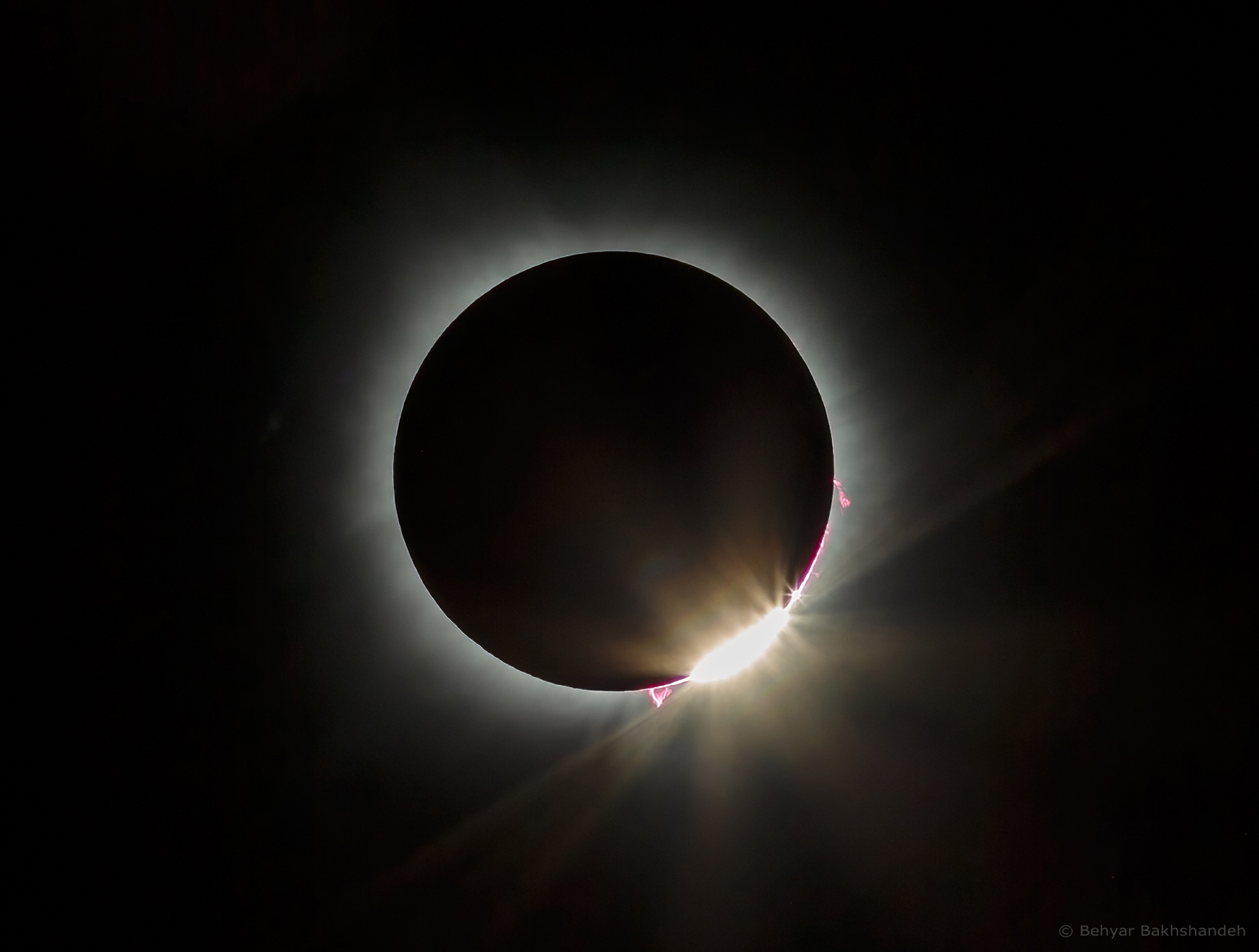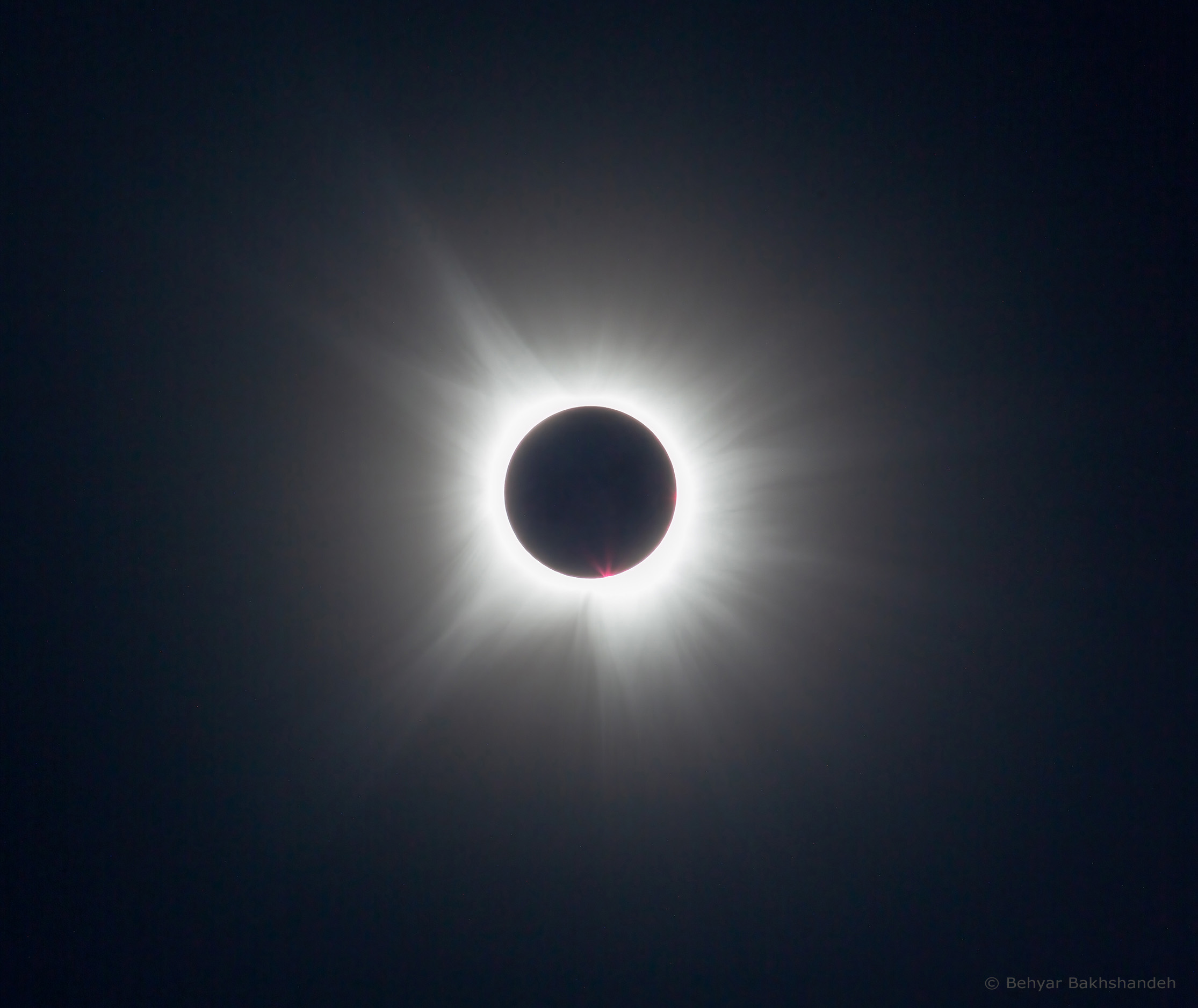Submissions: 2024 April
Submissions: 2024 April
__________________________________________________________________________________________________
Please post your images here.
Please see this thread before posting images; posting images demonstrates your agreement with
the possible uses for your image.
If hotlinking to an image, please ensure it is under 500K.
Hotlinks to images over 500K slow down the thread too much and will be disabled.
Thank you!
_________________________________________________________________________________________________
<- Previous submissions
Please post your images here.
Please see this thread before posting images; posting images demonstrates your agreement with
the possible uses for your image.
If hotlinking to an image, please ensure it is under 500K.
Hotlinks to images over 500K slow down the thread too much and will be disabled.
Thank you!
_________________________________________________________________________________________________
<- Previous submissions
Know the quiet place within your heart and touch the rainbow of possibility; be
alive to the gentle breeze of communication, and please stop being such a jerk. — Garrison Keillor
alive to the gentle breeze of communication, and please stop being such a jerk. — Garrison Keillor
-
rowan.prangley
- Asternaut
- Posts: 2
- Joined: Thu Mar 28, 2024 8:24 am
Re: Submissions: 2024 April
I'm pleased to submit to you for your consideration; A Southern Pearl - NGC6164 & NGC6165, "The Dragon's Egg", for NASA APOD 2024.
If required, please find the following link to the image in a high resolution format:
https://www.astrobin.com/7dexm4/
Description
To-date, Star HD 148937 is believed to the be the only magnetic O-type star known to be surrounded by a nebula. At a size 40 times as massive as our own Sun, HD148937 is rare, hot and quite the spectacular artist!
What makes HD 148937 so interesting is that it is, by far, the most massive Galactic star with a detected magnetic field, and this has given rise to studies (Mahy et al. 2016) focusing on the evolutionary state of not just the star but its close bipolar ejecta nebula: NGC 6164 and NGC 6165 (known to comprise "The Dragon's Egg") and their formation as circumstellar nebulous regions. When considering this target, more time was given to OIII integration (> 28 hours) to emphasize the blue halo, the ellipsoidal wind-blown shells. As NGC 6164 & NGC 6165 are relative bright, less than 8 hours for both Ha and SII were integrated to showcase the ionized nebula's - almost a figure "8" shape - spherically symmetric Strömgren sphere.
The image presented and its data was captured over several evenings during the 20th May 2023 through to the 14th July 2023; each night taking advantage of when the moon was below the horizon. What I love most about the The Dragon's Egg is that the star HD 148937 is still in it's prime, leading researchers to believe the creation of its surrounding ionized gasses to be due to the star's high rotation rate, expelling materials during earlier high-activity phases to create the beautiful blue halos and the magnetic field driven inner egg coining its name.
Acquisition details
Dates:
May 20 - 21, 2023
May 23, 2023
June 15, 2023
July 7, 2023
Frames:
Baader H-alpha Highspeed(f/2) Ultra-Narrowband 3.5nm (CMOS-Optimized) 2": 88×300″(7h 20′)
Baader O-III Highspeed(f/2) Ultra-Narrowband 4nm (CMOS-Optimized) 2": 339×300″(28h 15′)
Baader S-II Highspeed(f/2) Ultra-Narrowband 4nm (CMOS-Optimized) 2": 92×300″(7h 40′)
Integration: 43h 15′
Avg. Moon age:
10.52 days
Avg. Moon phase:
20.83%
Locations: Wollongbar NSW Australia
Imaging Equipment:
Imaging Telescopes - Celestron RASA 36cm (14")
Imaging Cameras - QHYCCD QHY268M
Mount - 10Micron GM3000 HPS
Many thanks for your consideration.
Best Regards,
Rowan
If required, please find the following link to the image in a high resolution format:
https://www.astrobin.com/7dexm4/
Description
To-date, Star HD 148937 is believed to the be the only magnetic O-type star known to be surrounded by a nebula. At a size 40 times as massive as our own Sun, HD148937 is rare, hot and quite the spectacular artist!
What makes HD 148937 so interesting is that it is, by far, the most massive Galactic star with a detected magnetic field, and this has given rise to studies (Mahy et al. 2016) focusing on the evolutionary state of not just the star but its close bipolar ejecta nebula: NGC 6164 and NGC 6165 (known to comprise "The Dragon's Egg") and their formation as circumstellar nebulous regions. When considering this target, more time was given to OIII integration (> 28 hours) to emphasize the blue halo, the ellipsoidal wind-blown shells. As NGC 6164 & NGC 6165 are relative bright, less than 8 hours for both Ha and SII were integrated to showcase the ionized nebula's - almost a figure "8" shape - spherically symmetric Strömgren sphere.
The image presented and its data was captured over several evenings during the 20th May 2023 through to the 14th July 2023; each night taking advantage of when the moon was below the horizon. What I love most about the The Dragon's Egg is that the star HD 148937 is still in it's prime, leading researchers to believe the creation of its surrounding ionized gasses to be due to the star's high rotation rate, expelling materials during earlier high-activity phases to create the beautiful blue halos and the magnetic field driven inner egg coining its name.
Acquisition details
Dates:
May 20 - 21, 2023
May 23, 2023
June 15, 2023
July 7, 2023
Frames:
Baader H-alpha Highspeed(f/2) Ultra-Narrowband 3.5nm (CMOS-Optimized) 2": 88×300″(7h 20′)
Baader O-III Highspeed(f/2) Ultra-Narrowband 4nm (CMOS-Optimized) 2": 339×300″(28h 15′)
Baader S-II Highspeed(f/2) Ultra-Narrowband 4nm (CMOS-Optimized) 2": 92×300″(7h 40′)
Integration: 43h 15′
Avg. Moon age:
10.52 days
Avg. Moon phase:
20.83%
Locations: Wollongbar NSW Australia
Imaging Equipment:
Imaging Telescopes - Celestron RASA 36cm (14")
Imaging Cameras - QHYCCD QHY268M
Mount - 10Micron GM3000 HPS
Many thanks for your consideration.
Best Regards,
Rowan
-
AstraPharmaQ8
- Ensign
- Posts: 30
- Joined: Fri Mar 24, 2023 8:48 pm
Re: Submissions: 2024 April
My name is Ali Al Obaidly
This is my submission for APOD, captured in Al Salmy, kuwait.

Description:
The Whirlpool Galaxy, also known as Messier 51 (M51) or NGC 5194, is a spiral galaxy located in the constellation Canes Venatici. It is one of the most famous galaxies in the night sky due to its striking appearance and its interaction with a smaller companion galaxy, NGC 5195.M51 was discovered by the French astronomer Charles Messier on October 13, 1773. Messier initially described it as a "very faint nebula without stars." However, in 1845, the English astronomer Lord Rosse observed M51 with his newly constructed 72-inch telescope and was able to discern its spiral structure, making it one of the first galaxies recognized as having a spiral shape. Although a 72-Inch wide aperture sounds otherworldly to modern day amateur astronomers like myself, it is still possible, thankfully, to discern much of the structure of this majestic galaxy with a telescope as small as a 9.25 inch SCT.
Equipment:
Imaging Telescopes: Celestron EdgeHD 9.25"
Imaging Camera: ZWO ASI2600MC Pro
Mount: Sky-Watcher EQ8-R Pro
Software: Stefan Berg Nighttime Imaging 'N' Astronomy (N.I.N.A. / NINA)
Acquisition details:
Dates: March 12, 2024
Frames: 69×300″(5h 45′)
Integration: 5h 45′
Avg. Moon age: 2.45 days
Avg. Moon phase: 6.66%
This is my submission for APOD, captured in Al Salmy, kuwait.

Description:
The Whirlpool Galaxy, also known as Messier 51 (M51) or NGC 5194, is a spiral galaxy located in the constellation Canes Venatici. It is one of the most famous galaxies in the night sky due to its striking appearance and its interaction with a smaller companion galaxy, NGC 5195.M51 was discovered by the French astronomer Charles Messier on October 13, 1773. Messier initially described it as a "very faint nebula without stars." However, in 1845, the English astronomer Lord Rosse observed M51 with his newly constructed 72-inch telescope and was able to discern its spiral structure, making it one of the first galaxies recognized as having a spiral shape. Although a 72-Inch wide aperture sounds otherworldly to modern day amateur astronomers like myself, it is still possible, thankfully, to discern much of the structure of this majestic galaxy with a telescope as small as a 9.25 inch SCT.
Equipment:
Imaging Telescopes: Celestron EdgeHD 9.25"
Imaging Camera: ZWO ASI2600MC Pro
Mount: Sky-Watcher EQ8-R Pro
Software: Stefan Berg Nighttime Imaging 'N' Astronomy (N.I.N.A. / NINA)
Acquisition details:
Dates: March 12, 2024
Frames: 69×300″(5h 45′)
Integration: 5h 45′
Avg. Moon age: 2.45 days
Avg. Moon phase: 6.66%
Re: Submissions: 2024 April
 2024 Solar Eclipse: Diamond Ring by Harley Grady, on Flickr
2024 Solar Eclipse: Diamond Ring by Harley Grady, on Flickr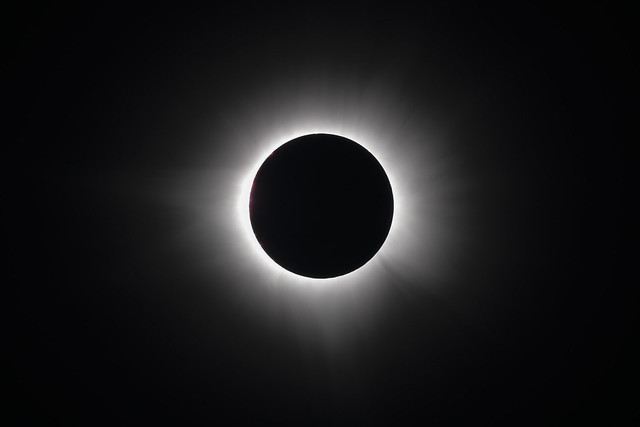 2024 Solar Eclipse: Totality by Harley Grady, on Flickr
2024 Solar Eclipse: Totality by Harley Grady, on FlickrTotality and the Diamond Ring from the April 8, 2024 eclipse in Hillsboro, TX. So glad the clouds held off just enough! Was an amazing experience.
Shot on a TS Optics 90mm CF APO refractor and Fuji XH2.
Re: Submissions: 2024 April
 April 8th, 2024 : Solar Eclipse Totality ' Earth Shine" by Harley Grady, on Flickr
April 8th, 2024 : Solar Eclipse Totality ' Earth Shine" by Harley Grady, on FlickrApril 8th, 2024 : Solar Eclipse Totality "Earth Shine". One of the interesting phenomena that can be captured during a total solar eclipse is "Earth Shine". Earth shine is the faint illumination of the new moon reflecting light from the earths surface. I wanted to try this after photographing the 2017 eclipse and because of the duration here in Hillsboro, Texas I had plenty of opportunity to get the exposures needed. This is a combination of five exposures blended together. Glad we had cleare nough skies at the @superbloomsfarm to get the shot! . Shot on a @TS Optics 90mm CF APO refractor and @fujifilmx_us XH2. Guided with a @skywatcherusa EQ6R Pro.
-
FormerInstants
Re: Submissions: 2024 April
Photo of the eclipse taken in Flower Mound, TX. I think this is a great combination of several of the major features of a total solar eclipse, all in one single exposure: a bit of the diamond ring, bailey's beads, prominences, and coronal structure including some visible magnetic field lines! Shot through a 400 mm lens with 1.7x teleconverter, for 650 mm at f/5.
Copyright credit can be Alan Olson. My web site is www.formerinstants.com, and the original flickr post is here: https://www.flickr.com/photos/formerins ... ed-public/
Copyright credit can be Alan Olson. My web site is www.formerinstants.com, and the original flickr post is here: https://www.flickr.com/photos/formerins ... ed-public/
-
Runewolf77
- Asternaut
- Posts: 1
- Joined: Mon Apr 08, 2024 9:46 pm
Re: Submissions: 2024 April
I took this while doing a live YouTube video 
Partial solar eclipse - Florida, USA
https://www.facebook.com/photo.php?fbid ... 7S9Ucbxw6v
Partial solar eclipse - Florida, USA
https://www.facebook.com/photo.php?fbid ... 7S9Ucbxw6v
-
andrea_girones
- Ensign
- Posts: 42
- Joined: Sat Oct 09, 2021 10:27 am
Re: Submissions: 2024 April
A Phoenix Rising over Lac Megantic
Today a total solar eclipse shone over a rural Quebec village that was all but destroyed 11 years ago. A run away train car started a massive explosion in the town centre that killed 47 people, turned the town to ashes, and remains the worst Canadian train disaster in our history.
A population with deep pain and trauma, ( the town still has regular loud trains passing through every few hours) came together today and watched a true miracle, the joyous event of the moon's shadow passing over us as the moon blocked the sun for 3 minutes 36 seconds.
Even though the temperature dropped at least 8 degrees Celsius, the villagers and visitors cheered, and played music and children blew soap bubbles in excitement. All were united and mesmerizer by this celestial event. I hope some were also comforted in the embrace of their community.
We met so many wonderful people, and loved every minute of this special day in a very special place.
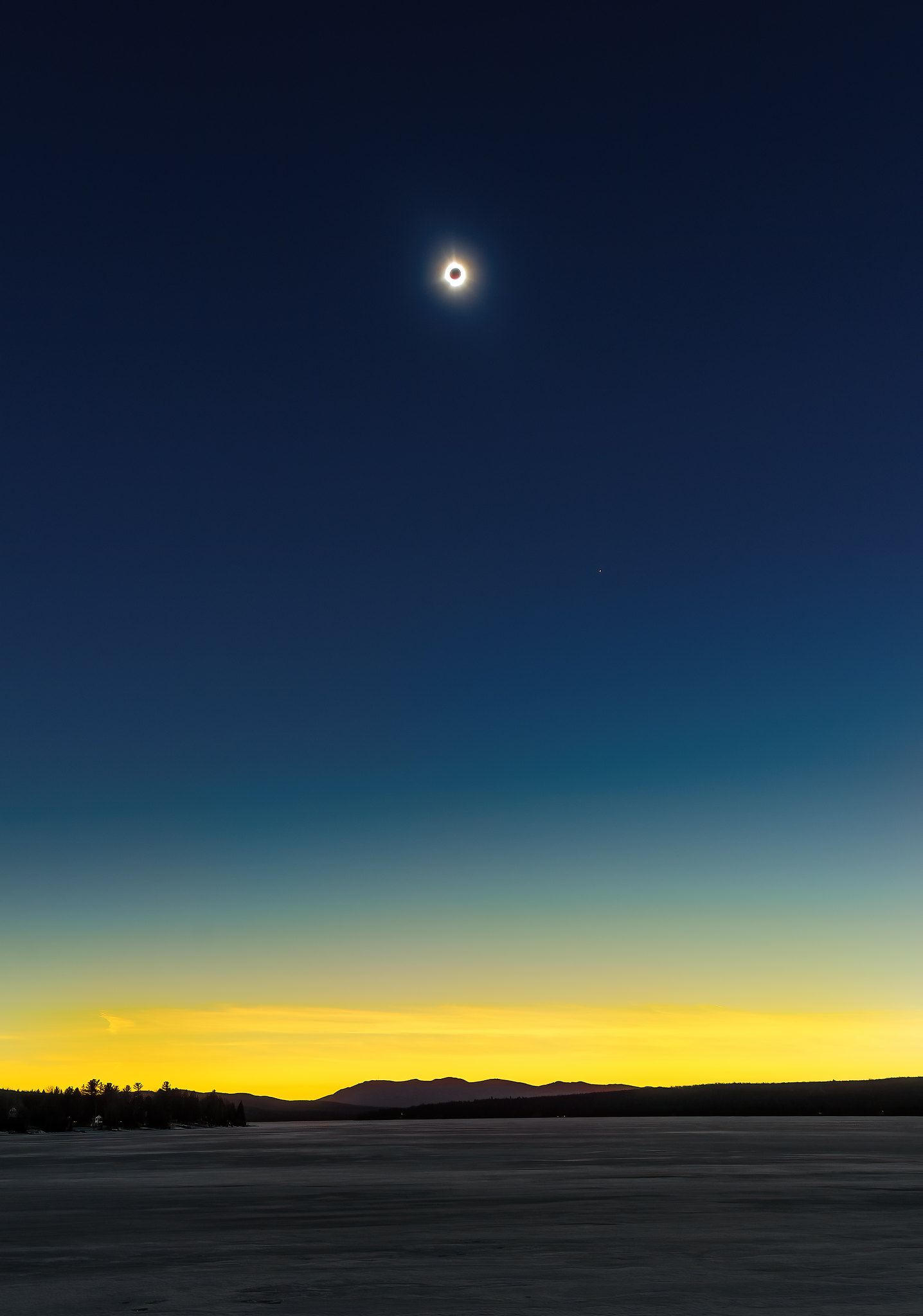 A Phoenix Rising over Lac Megantic by Andrea Girones, on Flickr
A Phoenix Rising over Lac Megantic by Andrea Girones, on Flickr
Today a total solar eclipse shone over a rural Quebec village that was all but destroyed 11 years ago. A run away train car started a massive explosion in the town centre that killed 47 people, turned the town to ashes, and remains the worst Canadian train disaster in our history.
A population with deep pain and trauma, ( the town still has regular loud trains passing through every few hours) came together today and watched a true miracle, the joyous event of the moon's shadow passing over us as the moon blocked the sun for 3 minutes 36 seconds.
Even though the temperature dropped at least 8 degrees Celsius, the villagers and visitors cheered, and played music and children blew soap bubbles in excitement. All were united and mesmerizer by this celestial event. I hope some were also comforted in the embrace of their community.
We met so many wonderful people, and loved every minute of this special day in a very special place.
 A Phoenix Rising over Lac Megantic by Andrea Girones, on Flickr
A Phoenix Rising over Lac Megantic by Andrea Girones, on Flickr-
kaustavghose
Re: Submissions: 2024 April
The moon slowly hides sunspot 3628 during the April 2024 Eclipse

Shot from San Saba, Texas using a Nikon Z6 ii with Sigma 50-500

Shot from San Saba, Texas using a Nikon Z6 ii with Sigma 50-500
-
kaustavghose
Re: Submissions: 2024 April
The moon slowly hides sunspot 3628 during the April 2024 Eclipse

Taken from San Saba, Texas using a Nikon Z6ii and a sigma 50-500

Taken from San Saba, Texas using a Nikon Z6ii and a sigma 50-500
-
PatrickWinkler
- Ensign
- Posts: 82
- Joined: Wed May 25, 2016 4:24 pm
- Location: Traiskirchen (Austria)
- Contact:
Re: Submissions: 2024 April
NGC 5139 - Omega Centauri
better Resolution: https://www.astrobin.com/full/e8c3z6/0/?mod=&real=
(c) Patrick Winkler
(c) Patrick Winkler
Re: Submissions: 2024 April
SN G065.3+5.7 - the little Cygnus Veils

SN G065.3+5.7 - the little Cygnus Veils by .zombi., on Flickr
Imaging telescopes: Takahashi FSQ-106EDXIII
Imaging cameras: Moravian G3-16200EC
Accessories: Reducer-QE 0.73X
Mounts: Sky-Watcher NEQ6-Pro
Software: N.I.N.A. · PixInsight · Adobe Photoshop
Frames:
Astrodon OIII 3nm 36 mm: 86×900″(21h 30′)
Baader Blue (B-CCD) 50 mm: 20×60″(20′)
Baader Green (G-CCD) 50 mm: 20×60″(20′)
Baader Red (R-CCD) 50 mm: 20×60″(20′)
Baader UV/IR Cut / Luminance 50 mm: 60×120″(2h)
SVBony H-alpha 7nm 2": 64×900″(16h)
Photographic technique: LRGB + Bicolor O3Ha. The frame is a two-panel mosaic of LRGB + OIII and Ha data.
Integration: 40h 30′
Bortle Dark-Sky Scale: 5/6
Location: Masłomiąca
Dates: 07.2023 - 09.2023
Description:
SNR G065.3+5.7 is the remnant of a supernova located in the constellation Cygnus, near the border with Vulpecula (the Little Cygnus Veils).
- It spans an area of approximately 4.0×3.3 degrees in the sky and has a diameter of about 230 light-years.
- The shell is primarily composed of OIII emissions, with some H-alpha signal.
- SNR G065.3+5.7 was discovered during the study of the Milky Way in the OIII channel by Gull, Kirshner, and Parker in 1977.
- Some parts of the SNR were previously cataloged by Stewart Sharpless in his SH2 catalog as SH2-91, SH2-94, and SH2-96, but they were not recognized as part of a larger structure.
- The age of the object is estimated to be 20,000 - 25,000 years, and it is located at a distance of approximately 2600 – 3200 light-years from Earth.
- The red star near the center is the planetary nebula PK064+05.1 - Campbell’s Hydrogen Star.
The object is also known by the name G65.3+5.7
Image Credit & Copyright: Przemysław Ząbczyk
Links:
http://www.astrobin.com/users/zombi/
https://www.astropolis.pl/tags/zombi/

SN G065.3+5.7 - the little Cygnus Veils by .zombi., on Flickr
Imaging telescopes: Takahashi FSQ-106EDXIII
Imaging cameras: Moravian G3-16200EC
Accessories: Reducer-QE 0.73X
Mounts: Sky-Watcher NEQ6-Pro
Software: N.I.N.A. · PixInsight · Adobe Photoshop
Frames:
Astrodon OIII 3nm 36 mm: 86×900″(21h 30′)
Baader Blue (B-CCD) 50 mm: 20×60″(20′)
Baader Green (G-CCD) 50 mm: 20×60″(20′)
Baader Red (R-CCD) 50 mm: 20×60″(20′)
Baader UV/IR Cut / Luminance 50 mm: 60×120″(2h)
SVBony H-alpha 7nm 2": 64×900″(16h)
Photographic technique: LRGB + Bicolor O3Ha. The frame is a two-panel mosaic of LRGB + OIII and Ha data.
Integration: 40h 30′
Bortle Dark-Sky Scale: 5/6
Location: Masłomiąca
Dates: 07.2023 - 09.2023
Description:
SNR G065.3+5.7 is the remnant of a supernova located in the constellation Cygnus, near the border with Vulpecula (the Little Cygnus Veils).
- It spans an area of approximately 4.0×3.3 degrees in the sky and has a diameter of about 230 light-years.
- The shell is primarily composed of OIII emissions, with some H-alpha signal.
- SNR G065.3+5.7 was discovered during the study of the Milky Way in the OIII channel by Gull, Kirshner, and Parker in 1977.
- Some parts of the SNR were previously cataloged by Stewart Sharpless in his SH2 catalog as SH2-91, SH2-94, and SH2-96, but they were not recognized as part of a larger structure.
- The age of the object is estimated to be 20,000 - 25,000 years, and it is located at a distance of approximately 2600 – 3200 light-years from Earth.
- The red star near the center is the planetary nebula PK064+05.1 - Campbell’s Hydrogen Star.
The object is also known by the name G65.3+5.7
Image Credit & Copyright: Przemysław Ząbczyk
Links:
http://www.astrobin.com/users/zombi/
https://www.astropolis.pl/tags/zombi/
Re: Submissions: 2024 April
2024 Eclipse - Diamond Ring
Copyright: Behyar Bakhshandeh, Carlsbad, CA
The 3rd contact. Shot from Ennis, TX
http://www.deepskyobjects.com/
Copyright: Behyar Bakhshandeh, Carlsbad, CA
The 3rd contact. Shot from Ennis, TX
http://www.deepskyobjects.com/
Re: Submissions: 2024 April
2024 Eclipse - Corona
Copyright: Behyar Bakhshandeh, Carlsbad, CA
Shot from Ennis, TX
http://www.deepskyobjects.com/
Copyright: Behyar Bakhshandeh, Carlsbad, CA
Shot from Ennis, TX
http://www.deepskyobjects.com/
Re: Submissions: 2024 April
Reworked old data of The Tadpoles
Click on above for larger image
OR much larger version available here on AstroBin: https://www.astrobin.com/we8v0e/C/
Click on above for larger image
OR much larger version available here on AstroBin: https://www.astrobin.com/we8v0e/C/
Re: Submissions: 2024 April
The Eye of Earth — Moon's Shadow During Total Solar Eclipse

Description:
These two photos were taken from 35,000 meters above San Antonio, Texas, using a high-altitude balloon and represent a two-year journey from conception to realization, capturing the Moon's shadow on Earth during the total solar eclipse, creating a stunning visual reminiscent of Earth's eye looking back at us. The equipment, designed and assembled by us, not only captured this moment but also safely returned, allowing us to share this unique perspective.
Technical Details:
Camera: Insta360 X3
Exposure: Auto (Video Screenshot)
Photographer: Yifan Xu, Lianyu Huang, Baolong Chen, Zhifan Liu

Description:
These two photos were taken from 35,000 meters above San Antonio, Texas, using a high-altitude balloon and represent a two-year journey from conception to realization, capturing the Moon's shadow on Earth during the total solar eclipse, creating a stunning visual reminiscent of Earth's eye looking back at us. The equipment, designed and assembled by us, not only captured this moment but also safely returned, allowing us to share this unique perspective.
Technical Details:
Camera: Insta360 X3
Exposure: Auto (Video Screenshot)
Photographer: Yifan Xu, Lianyu Huang, Baolong Chen, Zhifan Liu
Re: Submissions: 2024 April
The Hunt for the Devil - 12P/Pons–Brooks 
 The Hunt for the Devil - 12P/Pons–Brooks by Ahmed Waddah, on Flickr
The Hunt for the Devil - 12P/Pons–Brooks by Ahmed Waddah, on Flickr
I travelled over 500 kilometers from Cairo to a bortle 1 location in Al Wady Al Gaded Desert in New Valley government near the White Desert to have a final chance to catch comet 12P/Pons–Brooks - Devil Comet. It's a periodic comet with an orbital period of 71 years. I set up in front of a dune just about an hour before sunset and was able to get 35 images of 30 seconds each before the Devil comet set behind the dune. Both sky and foreground images were shot from the same position using the same camera and scope , the Askar FMA 180Pro. I had a friend walk up the dune just before sunrise to get the foreground image. The final image is a composite of both sky and foreground images.
Definitely a once in a lifetime ☄
Sky
Nikon Z6II - F/4.5 - 35x30s - ISO 1250
Sky guider Pro
Foreground
Nikon Z6II - F/4.5 - 1/15 - ISO 1250
Date: 6th of April, 2024
https://www.astrobin.com/dvbw83/
Social:
Facebook: https://www.facebook.com/waddah.photography
Astrobin: https://www.astrobin.com/users/WolfHeart/
IG: https://www.instagram.com/waddahphotography/
 The Hunt for the Devil - 12P/Pons–Brooks by Ahmed Waddah, on Flickr
The Hunt for the Devil - 12P/Pons–Brooks by Ahmed Waddah, on FlickrI travelled over 500 kilometers from Cairo to a bortle 1 location in Al Wady Al Gaded Desert in New Valley government near the White Desert to have a final chance to catch comet 12P/Pons–Brooks - Devil Comet. It's a periodic comet with an orbital period of 71 years. I set up in front of a dune just about an hour before sunset and was able to get 35 images of 30 seconds each before the Devil comet set behind the dune. Both sky and foreground images were shot from the same position using the same camera and scope , the Askar FMA 180Pro. I had a friend walk up the dune just before sunrise to get the foreground image. The final image is a composite of both sky and foreground images.
Definitely a once in a lifetime ☄
Sky
Nikon Z6II - F/4.5 - 35x30s - ISO 1250
Sky guider Pro
Foreground
Nikon Z6II - F/4.5 - 1/15 - ISO 1250
Date: 6th of April, 2024
https://www.astrobin.com/dvbw83/
Social:
Facebook: https://www.facebook.com/waddah.photography
Astrobin: https://www.astrobin.com/users/WolfHeart/
IG: https://www.instagram.com/waddahphotography/
-
Alson Wong
- Ensign
- Posts: 85
- Joined: Tue Sep 06, 2011 4:14 am
- Contact:
Re: Submissions: 2024 April
Total Solar Eclipse from Francisco I. Madero, Mexico
Copyright: Alson
Copyright: Alson
-
Alson Wong
- Ensign
- Posts: 85
- Joined: Tue Sep 06, 2011 4:14 am
- Contact:
Re: Submissions: 2024 April
Total Solar Eclipse from Francisco I. Madero, Mexico
URL of website, if any
Copyright: Alson Wong
URL of website, if any
Copyright: Alson Wong
-
Alson Wong
- Ensign
- Posts: 85
- Joined: Tue Sep 06, 2011 4:14 am
- Contact:
Re: Submissions: 2024 April
Total Solar Eclipse from Francisco I. Madero, Mexico
URL of website, if any
Copyright: Alson Wong
URL of website, if any
Copyright: Alson Wong
-
Alson Wong
- Ensign
- Posts: 85
- Joined: Tue Sep 06, 2011 4:14 am
- Contact:
Re: Submissions: 2024 April
Total Solar Eclipse from Francisco I. Madero, Mexico
URL of website, if any
Copyright: Alson Wong
URL of website, if any
Copyright: Alson Wong
-
Lefty's Astrophotography
- Ensign
- Posts: 21
- Joined: Mon Mar 16, 2020 12:32 am
Re: Submissions: 2024 April
2024 Eclipse - Four seconds before C2
Taken from Sikeston, MO using a 6" f/4 newtonain and Canon T3i, single 1/4000" exposure at ISO 100. minor adjustments to contrast and saturation and cropped in photoshop.
Copyright: Nick Miller (Lefty's Astrophotography) Full size image: https://live.staticflickr.com/65535/536 ... 69f7_o.png
Full acquisition / processing info: https://www.flickr.com/photos/leftysast ... 643004272/
Taken from Sikeston, MO using a 6" f/4 newtonain and Canon T3i, single 1/4000" exposure at ISO 100. minor adjustments to contrast and saturation and cropped in photoshop.
Copyright: Nick Miller (Lefty's Astrophotography) Full size image: https://live.staticflickr.com/65535/536 ... 69f7_o.png
Full acquisition / processing info: https://www.flickr.com/photos/leftysast ... 643004272/
-
andrea_girones
- Ensign
- Posts: 42
- Joined: Sat Oct 09, 2021 10:27 am
Re: Submissions: 2024 April
The Glory of Totality
Each step of a total eclipse has a special moment. When the moon has almost covered the entire sun, a bright glare flares out in a blinding diamond ring, at the beginning and end of totality.
In between, the last rays of light from our sun peek out though the craters and mountains of the moon (helped by the massive sun prominences this day). Those dots of red are called “Baileys Beads”
And the heart of totality, that moment when you can take off your solar glasses and see the full glory of the Corona that surrounds the sun.
Normally we cannot see the corona as the main disk of the sun is too bright. Only during totality can we see its whispy glory.
Imaged at 400MM with a D750
Very short exposures for the ring and beads, longer exposures to show the expanded corona.
On our beautiful day in Lac Megantic, Quebec, April 8th 2024.
 The Glory of Totality by Andrea Girones, on Flickr
The Glory of Totality by Andrea Girones, on Flickr
Each step of a total eclipse has a special moment. When the moon has almost covered the entire sun, a bright glare flares out in a blinding diamond ring, at the beginning and end of totality.
In between, the last rays of light from our sun peek out though the craters and mountains of the moon (helped by the massive sun prominences this day). Those dots of red are called “Baileys Beads”
And the heart of totality, that moment when you can take off your solar glasses and see the full glory of the Corona that surrounds the sun.
Normally we cannot see the corona as the main disk of the sun is too bright. Only during totality can we see its whispy glory.
Imaged at 400MM with a D750
Very short exposures for the ring and beads, longer exposures to show the expanded corona.
On our beautiful day in Lac Megantic, Quebec, April 8th 2024.
 The Glory of Totality by Andrea Girones, on Flickr
The Glory of Totality by Andrea Girones, on FlickrRe: Submissions: 2024 April
Hello
These are the images that I shot at North Troy, VT, USA for the Solar Eclipse. All images on Explore Scientific Refractor ED127 - 950 mm Focal Length with Canon 5D Mark II on Celestron AVX Tracking Mount.
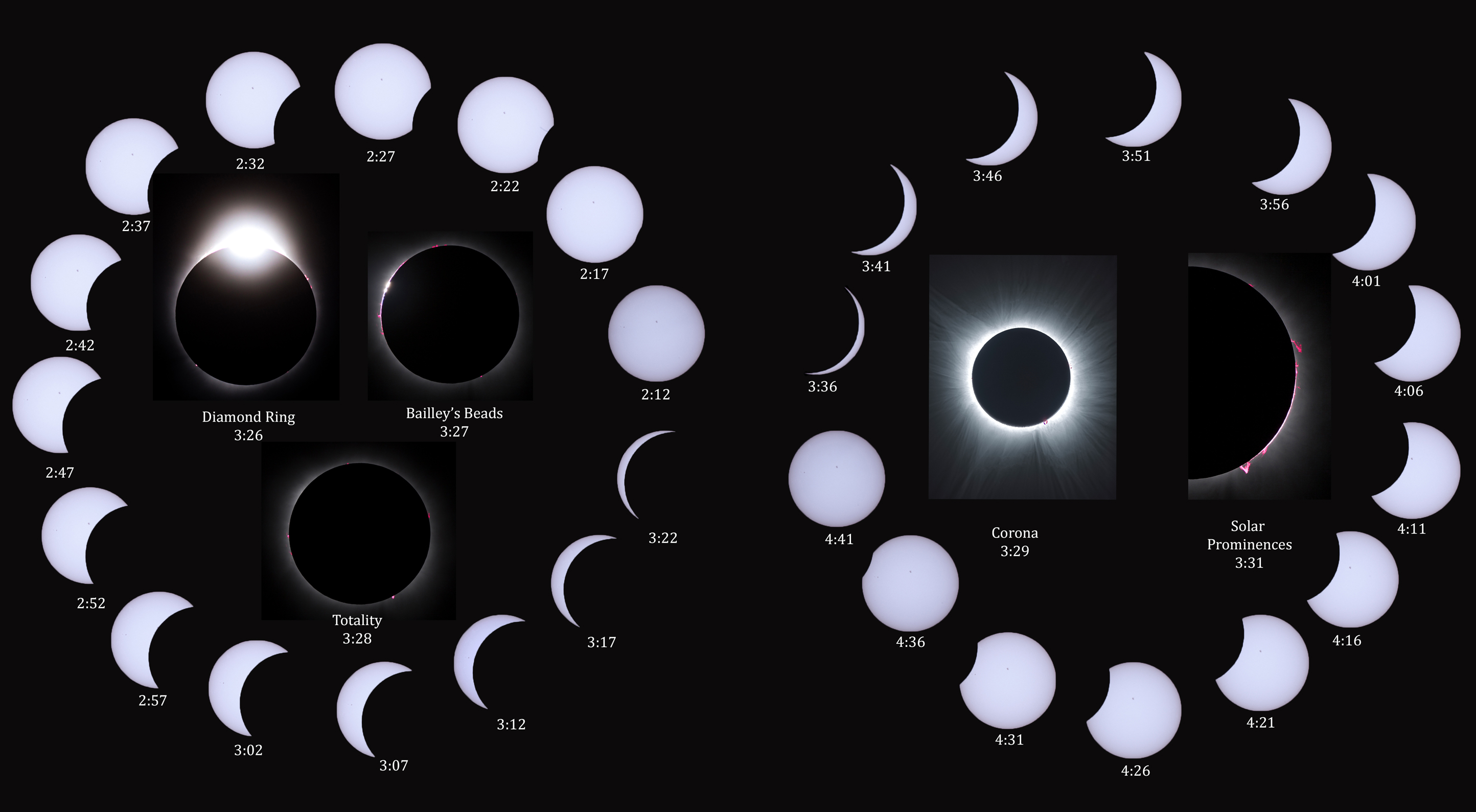
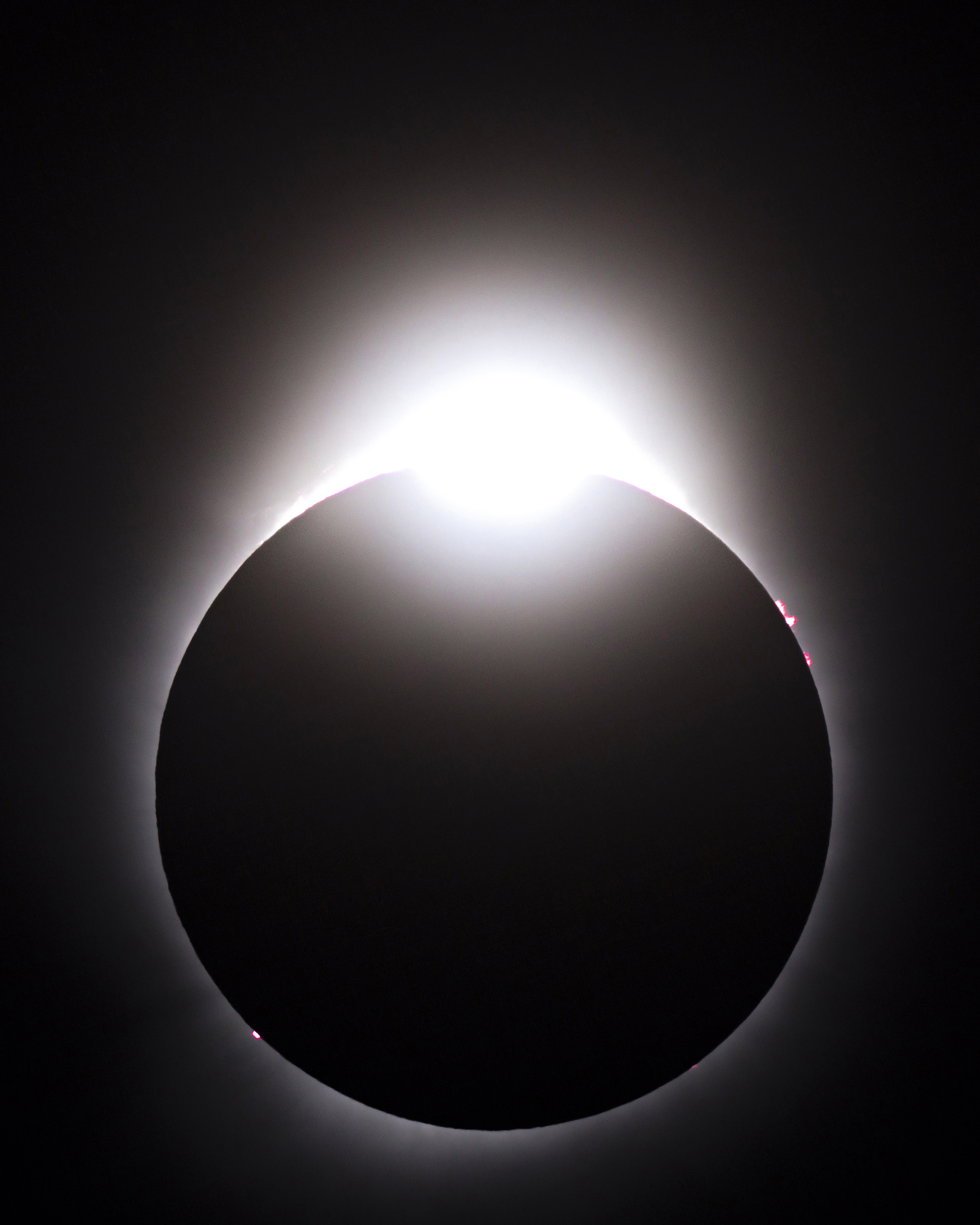
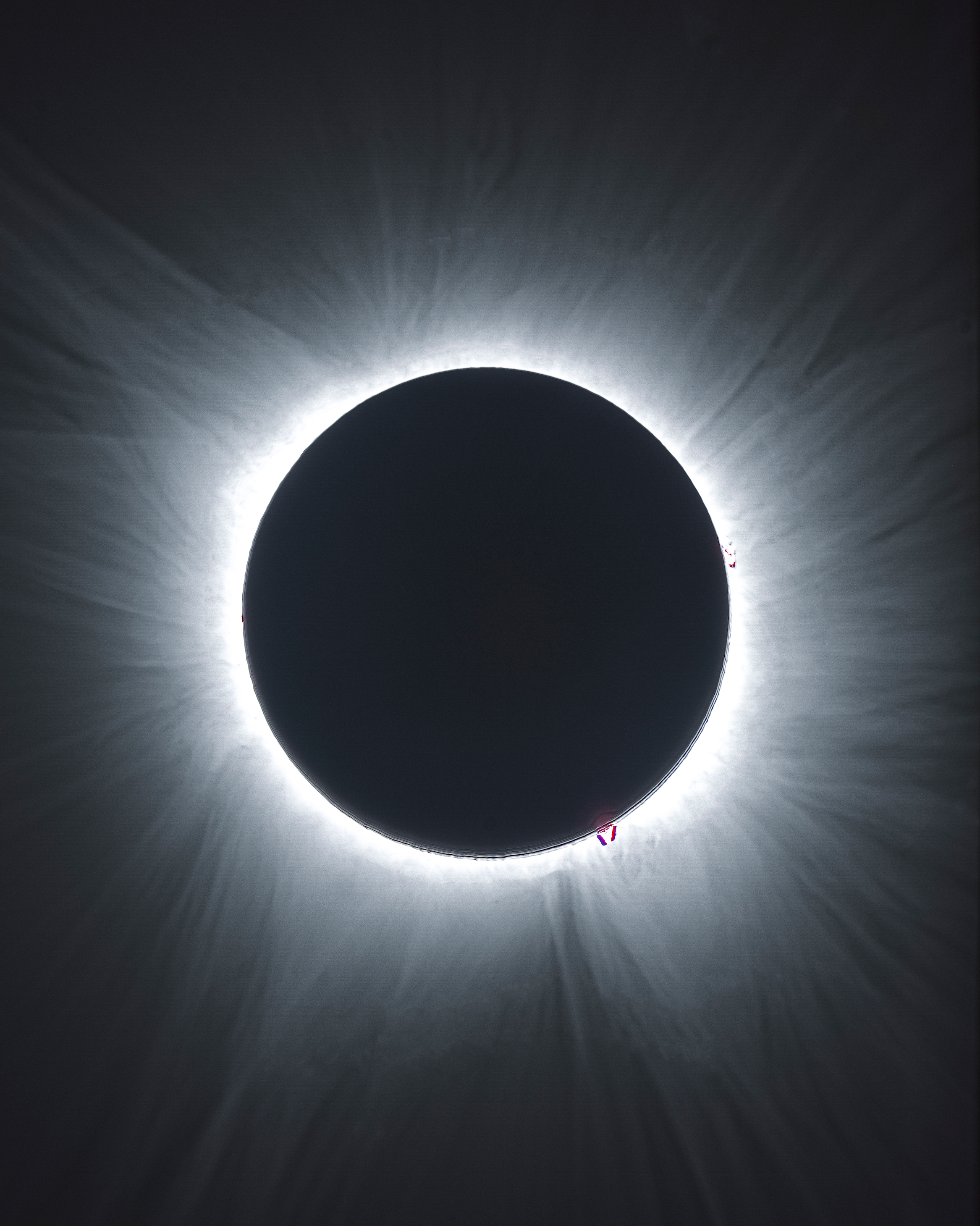
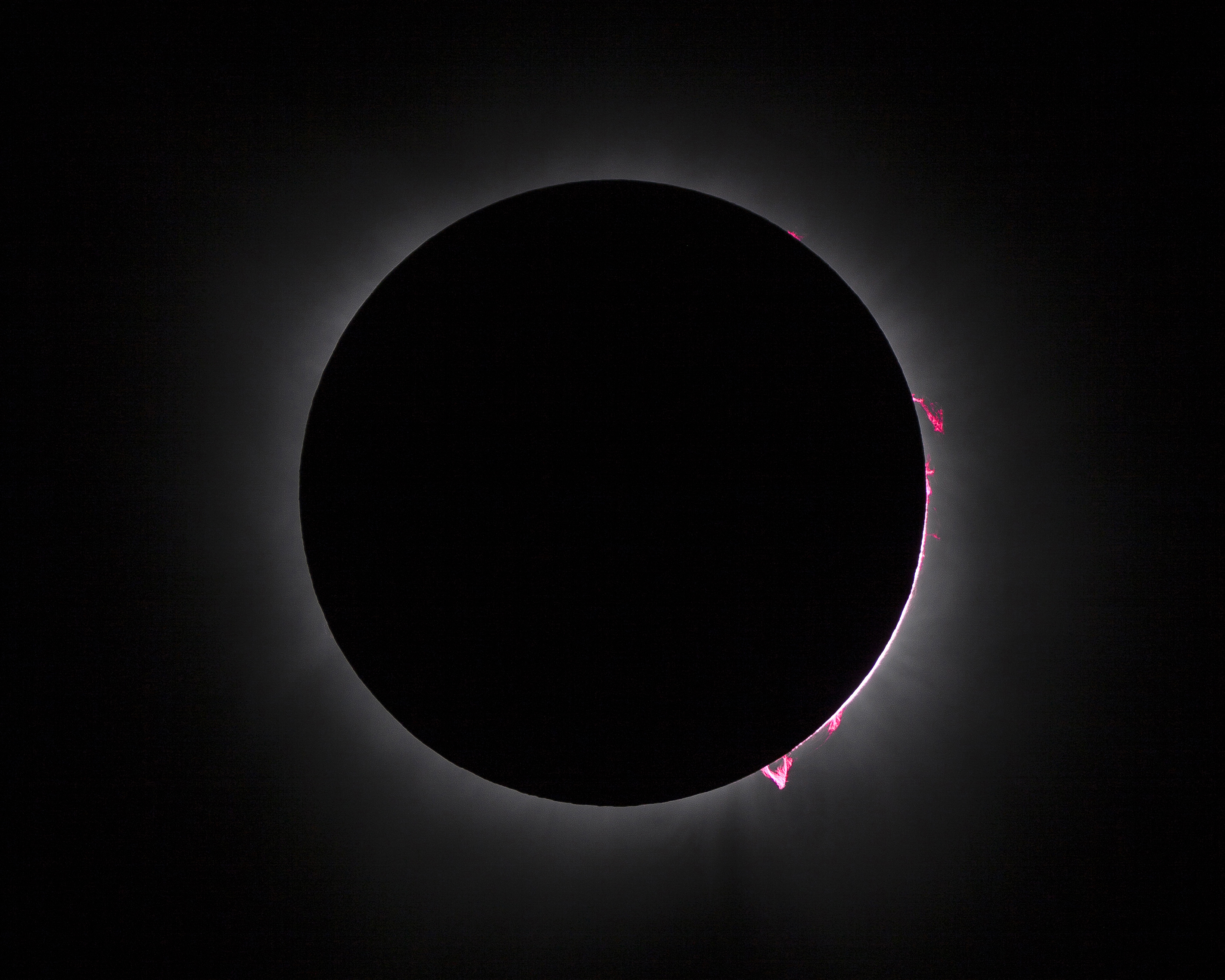

Copyright: Madhup Rathi
These are the images that I shot at North Troy, VT, USA for the Solar Eclipse. All images on Explore Scientific Refractor ED127 - 950 mm Focal Length with Canon 5D Mark II on Celestron AVX Tracking Mount.





Copyright: Madhup Rathi
-
@nightskysofia
Re: Submissions: 2024 April
Total Solar Eclipse and the Adirondacks
A total solar eclipse is a life changing event. Hiking 2 miles in the snow with all photography equipment just to have a view of the Adirondacks' High Peaks on April 8th, 2024 was truly a bold and wise choice. As it is seen, the composition of the Mount Van Hoevenberg and the High Peaks located in Lake Placid, NY, with the totality - also showing a bright Venus and a redish horizon, as if there was a sunset wherever one looked at - was absolutely breathtaking and made every step of the trail worth. I came all the way from Rio de Janeiro, Brazil, just to witness a total solar eclipse and take the photo I have always dreamed of.
This photo was taken with a Sony A7 II camera, a 24-240 lens at 24mm and a tripod. It is a HDR image, with photos ranging from 0,25 to 15 seconds of exposure. The location is the Balanced Rocks at Pitchoff Mountain, in Lake Placid.
Credit: Sofia Fonseca @nightskysofia
A total solar eclipse is a life changing event. Hiking 2 miles in the snow with all photography equipment just to have a view of the Adirondacks' High Peaks on April 8th, 2024 was truly a bold and wise choice. As it is seen, the composition of the Mount Van Hoevenberg and the High Peaks located in Lake Placid, NY, with the totality - also showing a bright Venus and a redish horizon, as if there was a sunset wherever one looked at - was absolutely breathtaking and made every step of the trail worth. I came all the way from Rio de Janeiro, Brazil, just to witness a total solar eclipse and take the photo I have always dreamed of.
This photo was taken with a Sony A7 II camera, a 24-240 lens at 24mm and a tripod. It is a HDR image, with photos ranging from 0,25 to 15 seconds of exposure. The location is the Balanced Rocks at Pitchoff Mountain, in Lake Placid.
Credit: Sofia Fonseca @nightskysofia

